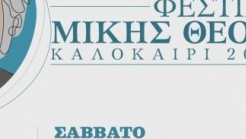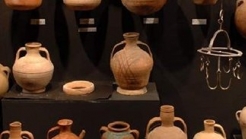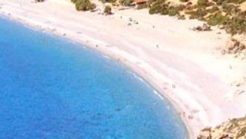

Greece
Indeed, the peak sanctuaries were the places where the Minoans imagined that their gods were living. They did not worship their gods in magnificent temples, such as those that have been built in the East. They practiced their religious in rural areas, in caves...
Peak sanctuaries: Where gods walk
Indeed, the peak sanctuaries were the places where the Minoans imagined that their gods were living. They did not worship their gods in magnificent temples, such as those that have been built in the East. They practiced their religious in rural areas, in caves, in which they built shrines in the mountain tops or even in private shrines within homes and palaces.
Over the steep and inaccessible peaks of the mountains of Crete were built shrines , as in Piskokefalo , in Traostalos , in Petsophas , in Filermo , in Jiouktas , the Prophet Elijah , the Maza and Kofina. The sky and the absolute peace and tranquility that prevailed in these areas submitted psychologically the believers and made them feel closer to the divine. Near the peak sanctuaries were specially designed levels to available space for incoming pilgrims. Also, small shrines were built in small enclosures. To get a clear picture of the sacred summit, we must see the stone rhyton from Zakros , depicting a peak sanctuary, as part of a stone vase, which depicts a sacred peak.
The cult was held the in the countryside rather than in sheltered buildings. Believers placed their bids in crevices, as the gap in Jiouktas. In their ceremonies, they lit huge bonfires and threw through figurines and other offerings. Is striking to note that dedicated members of the human body in order to be healed by the god.
Generally, the peak sanctuaries were places where believers considered themselves closer to God and experience the divine presence strongly. If you find yourself in something, you will feel insurmountable awe of the habit. In modern times in the tops of mountains are usually churches dedicated to Christ and the prophet Elijah.


Chania, from 27 to 29 July For the 4th consecutive year, the "Mikis Theodorakis" Festival is held in Chania at 27,28,29 July 2018. The program of actions is as follows:


The exhibits cover the 2ND millennium B.C. on the island of Crete. The report presents 3000 exhibits from all over the island of Crete and the ethnic taxonomic status of social work human.


At the end of an unforgettable trip, through the southern end of the White Mountains, lays the beach of Sougia, 67km south of the capital. A mix of sand and pebble, clean and deep waters, and an “unofficial” meeting point for nudists.
1039 Ε 6061 01515 00